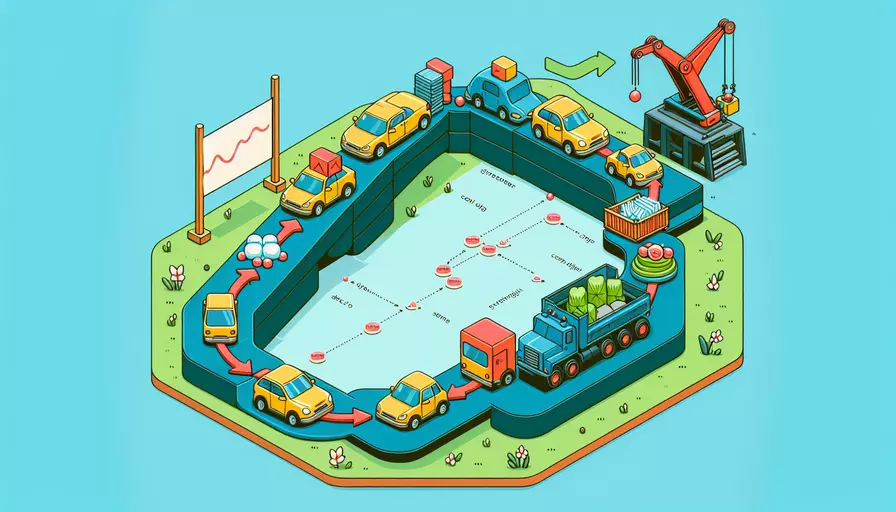
要在Vue中传递对象给Spring MVC,主要有以下几个步骤:1、在Vue中创建和填充对象,2、使用Axios或Fetch发送HTTP请求,3、在Spring MVC的控制器中接收对象。下面将详细解释每个步骤,并提供相关的代码示例和注意事项。
一、在Vue中创建和填充对象
首先,需要在Vue组件中创建一个对象,并为其填充数据。可以通过表单输入或者其他方式获取用户输入的数据,然后将其封装到一个对象中。
<template>
<div>
<form @submit.prevent="submitForm">
<input v-model="user.name" placeholder="Name" />
<input v-model="user.email" placeholder="Email" />
<button type="submit">Submit</button>
</form>
</div>
</template>
<script>
export default {
data() {
return {
user: {
name: '',
email: ''
}
};
},
methods: {
submitForm() {
this.sendDataToServer(this.user);
},
sendDataToServer(user) {
// 此处将会发送HTTP请求
}
}
};
</script>
二、使用Axios或Fetch发送HTTP请求
在Vue中,可以使用Axios或Fetch来发送HTTP请求,将对象传递给Spring MVC后端。以下是使用Axios的示例:
import axios from 'axios';
methods: {
sendDataToServer(user) {
axios.post('http://localhost:8080/api/users', user)
.then(response => {
console.log('Data sent successfully:', response.data);
})
.catch(error => {
console.error('There was an error sending the data:', error);
});
}
}
如果你更喜欢使用Fetch API,可以参考以下示例:
methods: {
sendDataToServer(user) {
fetch('http://localhost:8080/api/users', {
method: 'POST',
headers: {
'Content-Type': 'application/json'
},
body: JSON.stringify(user)
})
.then(response => response.json())
.then(data => {
console.log('Data sent successfully:', data);
})
.catch(error => {
console.error('There was an error sending the data:', error);
});
}
}
三、在Spring MVC的控制器中接收对象
在Spring MVC后端,需要创建一个控制器来接收从Vue发送的对象。可以使用@RequestBody注解来接收JSON格式的请求体,并将其转换为Java对象。
import org.springframework.web.bind.annotation.*;
@RestController
@RequestMapping("/api")
public class UserController {
@PostMapping("/users")
public ResponseEntity<User> createUser(@RequestBody User user) {
// 处理接收到的用户数据
System.out.println("Received user: " + user);
// 返回响应
return ResponseEntity.ok(user);
}
}
此外,需要确保你的Spring Boot项目中已经包含了处理JSON数据的依赖,例如spring-boot-starter-web。
四、完整示例和注意事项
在实际项目中,需要确保前后端的数据格式一致,并处理可能出现的错误。以下是一个完整的示例,展示了如何在Vue前端和Spring MVC后端之间传递对象。
1、前端Vue代码
<template>
<div>
<form @submit.prevent="submitForm">
<input v-model="user.name" placeholder="Name" />
<input v-model="user.email" placeholder="Email" />
<button type="submit">Submit</button>
</form>
</div>
</template>
<script>
import axios from 'axios';
export default {
data() {
return {
user: {
name: '',
email: ''
}
};
},
methods: {
submitForm() {
this.sendDataToServer(this.user);
},
sendDataToServer(user) {
axios.post('http://localhost:8080/api/users', user)
.then(response => {
console.log('Data sent successfully:', response.data);
})
.catch(error => {
console.error('There was an error sending the data:', error);
});
}
}
};
</script>
2、后端Spring MVC代码
import org.springframework.http.ResponseEntity;
import org.springframework.web.bind.annotation.*;
@RestController
@RequestMapping("/api")
public class UserController {
@PostMapping("/users")
public ResponseEntity<User> createUser(@RequestBody User user) {
// 处理接收到的用户数据
System.out.println("Received user: " + user);
// 返回响应
return ResponseEntity.ok(user);
}
}
public class User {
private String name;
private String email;
// Getters and setters
@Override
public String toString() {
return "User{" +
"name='" + name + '\'' +
", email='" + email + '\'' +
'}';
}
}
五、总结
通过上述步骤,您可以在Vue中创建对象并通过Axios或Fetch发送HTTP请求,将对象传递给Spring MVC后端。在后端,通过控制器接收并处理这些对象。这种方法可以确保前后端数据传递的完整性和一致性。在实际应用中,还需要考虑数据验证、异常处理和安全性等问题,以确保系统的健壮性和可靠性。
进一步建议是,您可以使用Vuex管理全局状态,或使用Spring Security确保后端接口的安全性。通过这些措施,可以提升项目的可维护性和安全性。
相关问答FAQs:
1. Vue如何传递对象给Spring MVC?
在Vue中,我们可以使用axios或者fetch等库来发送HTTP请求。要传递对象给Spring MVC,我们可以使用POST请求,并将对象作为请求体的一部分发送。
首先,我们需要在Vue项目中安装axios库。可以使用npm或者yarn来安装:
npm install axios
或者
yarn add axios
然后,在Vue组件中使用axios发送POST请求:
import axios from 'axios';
// 创建一个对象,用于传递给Spring MVC
const myObject = {
name: 'John',
age: 30,
email: 'john@example.com'
};
axios.post('/api/endpoint', myObject)
.then(response => {
// 请求成功的处理逻辑
console.log(response);
})
.catch(error => {
// 请求失败的处理逻辑
console.error(error);
});
在上面的代码中,我们使用axios的post方法发送了一个POST请求到/api/endpoint,并将myObject作为请求体发送给了Spring MVC的后端接口。
在Spring MVC中,我们可以使用@RequestBody注解来接收前端传递的对象:
@RestController
@RequestMapping("/api")
public class MyController {
@PostMapping("/endpoint")
public void handleRequest(@RequestBody MyObject myObject) {
// 对接收到的对象进行处理
System.out.println(myObject.getName());
System.out.println(myObject.getAge());
System.out.println(myObject.getEmail());
}
}
在上面的代码中,我们在Spring MVC的控制器方法中使用@RequestBody注解来接收前端发送的对象。Spring MVC会自动将请求体中的JSON数据转换为对应的对象。
2. 如何在Vue中使用axios传递对象数组给Spring MVC?
如果我们要传递一个对象数组给Spring MVC,可以将数组作为请求体的一部分发送。
在Vue中,我们可以使用类似的方法来发送POST请求,并将对象数组作为请求体的一部分发送:
import axios from 'axios';
// 创建一个对象数组,用于传递给Spring MVC
const myArray = [
{ name: 'John', age: 30, email: 'john@example.com' },
{ name: 'Jane', age: 25, email: 'jane@example.com' },
{ name: 'Tom', age: 35, email: 'tom@example.com' }
];
axios.post('/api/endpoint', myArray)
.then(response => {
// 请求成功的处理逻辑
console.log(response);
})
.catch(error => {
// 请求失败的处理逻辑
console.error(error);
});
在Spring MVC中,我们可以使用@RequestBody注解来接收前端传递的对象数组:
@RestController
@RequestMapping("/api")
public class MyController {
@PostMapping("/endpoint")
public void handleRequest(@RequestBody List<MyObject> myArray) {
// 对接收到的对象数组进行处理
for (MyObject obj : myArray) {
System.out.println(obj.getName());
System.out.println(obj.getAge());
System.out.println(obj.getEmail());
}
}
}
在上面的代码中,我们在Spring MVC的控制器方法中使用@RequestBody注解来接收前端发送的对象数组。Spring MVC会自动将请求体中的JSON数组转换为对应的对象数组。
3. 如何在Vue中使用URL参数传递对象给Spring MVC?
除了使用POST请求传递对象给Spring MVC外,我们还可以使用URL参数的方式传递对象。
在Vue中,我们可以使用axios的GET请求,并将对象属性作为URL参数的一部分发送:
import axios from 'axios';
// 创建一个对象,用于传递给Spring MVC
const myObject = {
name: 'John',
age: 30,
email: 'john@example.com'
};
axios.get('/api/endpoint', { params: myObject })
.then(response => {
// 请求成功的处理逻辑
console.log(response);
})
.catch(error => {
// 请求失败的处理逻辑
console.error(error);
});
在上面的代码中,我们使用axios的get方法发送了一个GET请求到/api/endpoint,并将myObject的属性作为URL参数发送给了Spring MVC的后端接口。
在Spring MVC中,我们可以使用@RequestParam注解来接收URL参数:
@RestController
@RequestMapping("/api")
public class MyController {
@GetMapping("/endpoint")
public void handleRequest(@RequestParam String name, @RequestParam int age, @RequestParam String email) {
// 对接收到的参数进行处理
System.out.println(name);
System.out.println(age);
System.out.println(email);
}
}
在上面的代码中,我们在Spring MVC的控制器方法中使用@RequestParam注解来接收前端发送的URL参数。Spring MVC会自动将URL参数的值赋给对应的方法参数。
通过上述方法,我们可以在Vue中传递对象给Spring MVC,并在后端接收和处理这些对象。无论是使用POST请求还是URL参数的方式,都可以实现Vue与Spring MVC之间的对象传递。
文章标题:vue如何传递对象给springmvc,发布者:worktile,转载请注明出处:https://worktile.com/kb/p/3646056

 微信扫一扫
微信扫一扫  支付宝扫一扫
支付宝扫一扫 